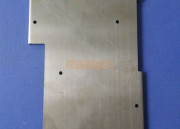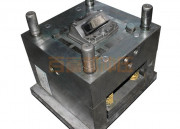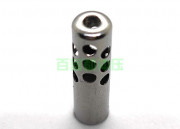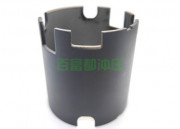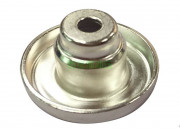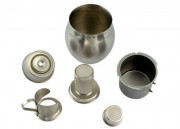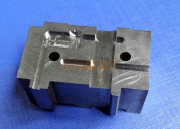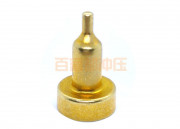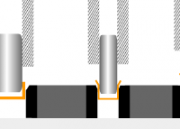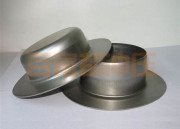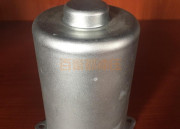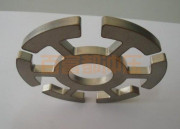What is the reason for the failure of stamping and drawing dies in processing and casting?
1. The process of stamping and drawing die
Punching die is a method of casting liquid die forging, a process completed on a special die-casting die forging machine. The basic process is: the molten metal is first cast into the mold cavity at a low speed or high speed, and the mold has a movable cavity surface. With the cooling process of the metal liquid, pressure forging not only eliminates the shrinkage defect of the blank, but also makes the internal structure of the blank reach forging. Broken grains.
2. The main reasons for the failure of stamping and drawing dies are as follows:
1. Thermal fatigue crack damage failure
During die-casting production, the mold is repeatedly subjected to the action of cold and heat, the forming surface and its interior will be deformed, and they will be pulled together to generate repeated thermal stress, which will cause damage to the structure and loss of toughness, which will lead to the occurrence of micro-cracks and continue to expand. , once the crack expands, the molten metal is continuously squeezed in, coupled with repeated mechanical stress, the crack accelerates the expansion rate. Therefore, the mold must be fully preheated at the beginning of die casting. In addition, during the production process of die casting, the mold must be kept in a moderate working temperature range to prevent early cracking failure. At the same time, it should be ensured that there are no problems with internal factors before the mold is put into production and during production. Because in actual production, most mold failures are failures caused by thermal fatigue cracks.
2. Fragmentation failure
Under the action of pressure, the mold will crack at the weak place, especially if the scribe marks or electrical machining marks on the molding surface of the mold are not polished, or the clear corners of the molding will appear micro cracks first. When there is a brittle phase or coarse grains in the boundary, it is easy to fracture. However, the cracks expand rapidly during brittle fracture, which is a very dangerous factor for the chipping failure of the mold. For this reason, on the one hand, all scratches and electrical machining marks on the mold surface must be polished, even if it is in the gating system part, it must be polished. In addition, the mold materials used are required to have high strength, good plasticity, good impact toughness and fracture toughness.
3. Dissolution failure
Commonly used die-casting alloys include zinc alloy, aluminum alloy, magnesium alloy and copper alloy, as well as pure aluminum die-casting. Zn, Al, and Mg are more active metal elements, and they have a good affinity with mold materials. When the hardness of the mold is higher, the corrosion resistance is better, and if there are soft spots on the molding surface, the corrosion resistance is unfavorable.
Read More →

